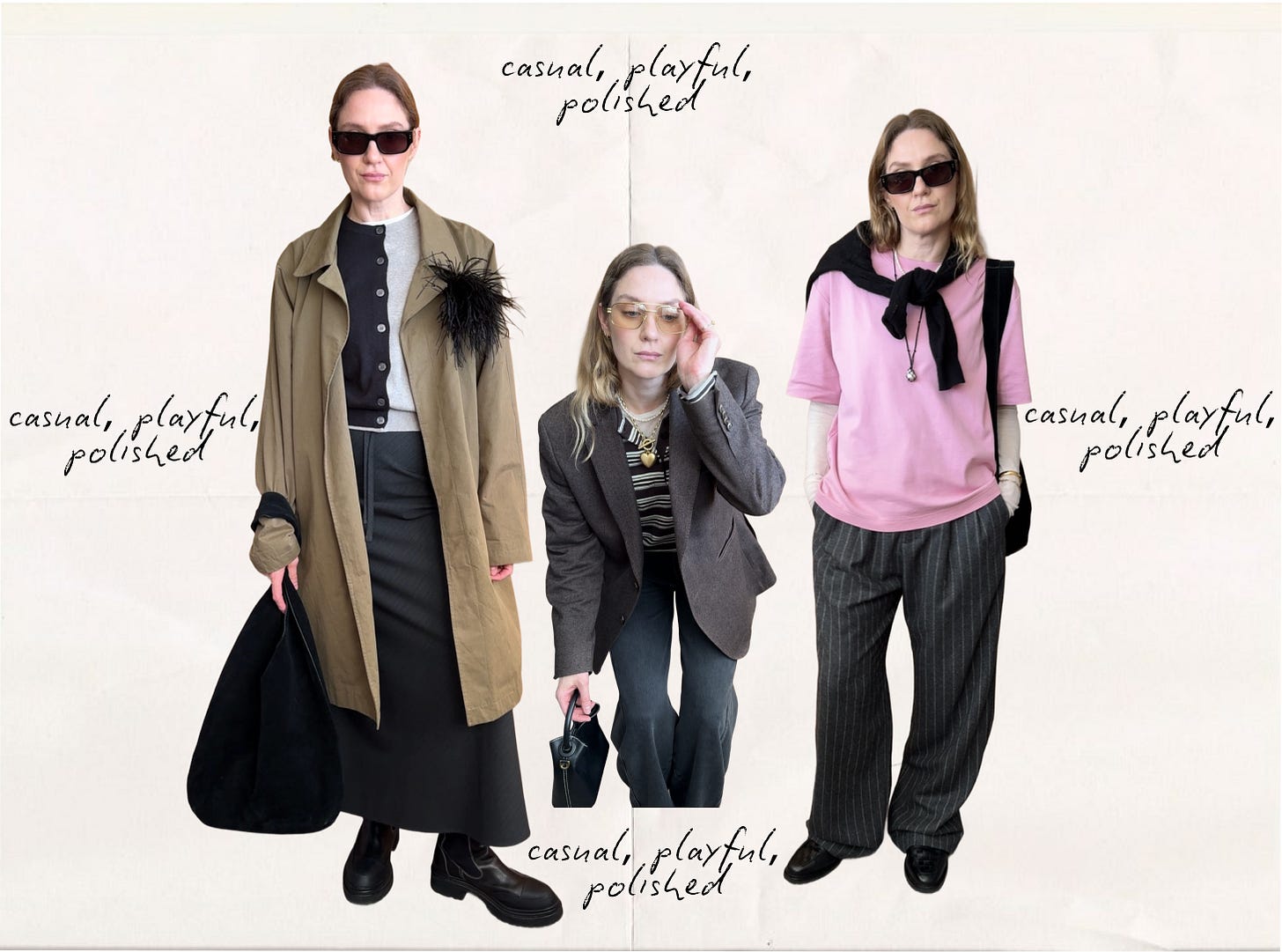How do I define my personal style?
A stylist’s framework for figuring it all out.
Like most professions, styling is part intuition and part systemisation. I believe we’re all born with the ability to intuit what we like: what our eye is drawn to and what just looks…good. But for whatever reason, a lot of us struggle to feel confident in translating that intuition via our own wardrobes. It can all feel so unruly, so big, so hard to wrangle and make sense of. But after working as a stylist for 15 years, I guess you could say I’ve been able to untangle the furball that is personal style into a framework that can support our intuition to shine.
I’ve been doing more and more wardrobe styling sessions lately (to book one for yourself, email me) and it’s really hammered home to me just how powerful it is to feel like you’ve got both hands on the wheel of your personal style. And whether you want to feel powerful, soft, approachable, or Rihanna-level amounts of confidence, the key to unlocking great personal style is balance — as in, when our outfit is balanced, we can totally embody our uniqueness and full expressiveness.
In this week’s newsletter, I’ll share my tips for how to define your personal style and then how to balance an outfit using your personal style framework.
Defining your personal style is really about identifying the consistent themes, moods, and details that make you feel most like yourself, or the person you want to be when you get dressed. It’s not about following trends; it IS about recognising patterns in what you’re drawn to.
Some people seem like they were born stylish and confident, but most of the time it’s a process of learning — either through osmosis (maybe your mum was super stylish and you watched how she pieced together an outfit) or through thoughtfulness and intention. Figuring out your personal style will take effort, but the pay off is that getting dressed will be a more joyful experience, wearing clothes will feel easy and natural, and shopping will be an infinitely less overwhelming and impulsive exercise. It will also help you pinpoint why an outfit isn’t working, or why you don’t feel like yourself.
And, plot twist: you don’t always have to stick to this! You are a person who is changing all the time, so it makes sense that your style framework will too. Adjust as needed, according to your mood and lifestyle. You aren’t locked in here. This is not a style mortgage.
Keep reading with a 7-day free trial
Subscribe to homeroom to keep reading this post and get 7 days of free access to the full post archives.




